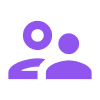The book The Performance Menu was published in 2021. This book contains many ingredients that contribute positively to employee performance. Such as, for example: dialogues on job satisfaction, the ideal work environment, autonomy, personal development and the right balance between workload and taxability. A basic ingredient is a focus on employee strengths.
Reinforce what works!
When it comes to learning and development, people still and often start at weaknesses. This starts at school where students receive tutoring in a subject they are failing. Later in their working lives, a B score (“needs improvement”) in the appraisal interview results in a coaching program. This approach, all competencies must be minimally present, does not always provide the performance improvement so fervently hoped for. After all, it takes untold energy to develop weaknesses. Instead, it’s much more effective to focus on what employees are already good at and use and develop these strengths even more. Reinforce what works!
What is a talent and what is a strength?
A strong point is a talent in action. Being talented at something means, above all, that you can develop a particular competency much more easily than another. A talent is that you love to kick a ball and no one has to motivate you to do so. Intrinsic motivation is high. That doesn’t mean you are scoring goals by the conveyor belt. Through focused (striker) training, playing many games and analyzing them, a talent can be developed into a strong point (in this case, scoring). Practice and persistence makes perfect.
How do you discover strengths?
There are many approaches to bringing employee strengths into focus. This can be done online with a variety of tests but also “just” by thinking about the answers to the following questions as an employee:
- What gives me the greatest job satisfaction? What do I enjoy most in my work? What talents are then called upon?
- What do I often get compliments on? What does that say about what I’m good at?
- When do I go home (or to work) whistling? So what have I accomplished? So what qualities of myself do I put to use?
- What energizes me and what are my energy leaks?
- What do I consider an important success from recent times? What did I do that contributed to the success? What was the effect of that? What does this say about what I am good at?
Scientifically proven!
Pitfalls in transitioning to strengths? Marianne van Woerkom, professor at EUR and an authority on the strengths-based approach, states that as scientifically proven that a focus on strengths, autonomy, tapping into energy resources, valuable work and a pleasant workplace contribute in a positive way, especially in combination with each other, to employee engagement, motivation, vitality and job satisfaction. By extension, I argue that the above topics should then be central to conversations with employees. In fact, this conversational approach leads to better performance, less absenteeism and turnover, and sustainable employability of employees(white paper by Marianne van Woerkom).
More engaged employees
How does focusing on strengths result in more engaged employees? With the answers to questions to sharpen(er) strengths, employees can make agreements with their managers about how to use and develop these strengths even more. Not only do employees gain from this, doing work they enjoy and are good at, but certainly so do managers and organizations. The scientific evidence is there, focusing on employee strengths is a win, win, win for employee, manager and organization.
Want to know more?
Want to know more about the appraisal interview? And how to renew them? Also read our blog “The appraisal interview and The New Appraisal: tips and examples.




























